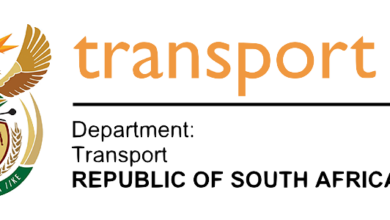Unveiling GPR Training Learnerships for 2024: Bridging Skills and Opportunities in the Geospatial Realm

As we advance into 2024, the significance of Ground Penetrating Radar (GPR) technology is becoming increasingly apparent across various fields such as archaeology, construction, and environmental studies. GPR is a non-invasive geophysical method used to investigate subsurface structures and detect hidden features without disturbing the ground. This capability is invaluable for professionals needing precise subsurface data. To meet the growing demand for expertise in this specialized field, GPR training learnership programs have emerged as a critical component of the professional landscape. These learnerships are designed to equip individuals with both theoretical knowledge and practical skills, ensuring they are well-prepared for the evolving challenges and opportunities in GPR technology.
The Essence of GPR Training Learnerships
GPR training learnerships in 2024 are crafted to provide a comprehensive education in the principles and applications of GPR technology. These programs blend formal coursework with hands-on experience, offering a well-rounded approach to learning that is crucial for mastering this complex technology. The primary aim is to produce professionals who can effectively use GPR systems in various real-world scenarios, from mapping underground utilities to conducting archaeological surveys.
1. Core Curriculum and Knowledge Acquisition
The foundation of a GPR training learnership involves understanding the fundamental principles of radar technology and signal processing. Participants learn about the physics of electromagnetic waves, radar pulse propagation, and data interpretation. A critical component of this curriculum is the study of different GPR system configurations and their applications. This knowledge helps learners appreciate how various settings affect the quality and accuracy of data collected.
2. Practical Training and Field Experience
One of the distinguishing features of GPR training learnerships is their emphasis on practical, hands-on experience. Learners have the opportunity to operate GPR equipment in controlled environments as well as in actual field conditions. This training often involves conducting surveys, analyzing subsurface data, and interpreting results to make informed decisions. By working on real-life projects, participants gain valuable experience in managing equipment, handling data, and troubleshooting issues that may arise during GPR surveys.
3. Industry-Relevant Applications
GPR technology is versatile and applicable across several industries. Training programs incorporate industry-specific modules to ensure that participants can apply their skills effectively in various contexts. For instance, in construction, learners might focus on detecting rebar and voids in concrete structures. In archaeology, the emphasis might be on locating buried artifacts and understanding site stratigraphy. Tailoring training to specific applications enhances the relevance and utility of the skills acquired.

4. Advanced Techniques and Innovations
As GPR technology evolves, so do the techniques and methods used. Advanced GPR training learnerships include modules on the latest innovations in the field, such as high-frequency GPR systems and advanced data processing algorithms. Learners are introduced to cutting-edge tools and techniques that improve the resolution and accuracy of subsurface imaging. This exposure ensures that participants are at the forefront of technological advancements and can apply the latest methods in their professional practice.
5. Soft Skills and Professional Development
Effective communication, project management, and critical thinking are essential for success in any technical field. GPR training learnerships incorporate elements of soft skills development to prepare participants for the professional challenges they will face. This includes learning how to present findings clearly to clients or stakeholders, manage project timelines, and collaborate effectively within a team. These skills complement the technical expertise gained during the training and are crucial for career advancement.
The Impact of GPR Training Learnerships
1. Enhancing Workforce Competency
GPR training learnerships address the skills gap in the geospatial and engineering sectors by producing highly skilled professionals who can operate GPR systems with proficiency. This enhanced competency is crucial for industries that rely on accurate subsurface data for project planning and decision-making.
2. Driving Innovation and Efficiency
By equipping professionals with advanced GPR skills, these training programs contribute to innovation in various fields. For example, improved GPR techniques can lead to more efficient construction practices, better archaeological discoveries, and more effective environmental assessments. The application of advanced GPR methods also fosters research and development, driving progress in the field.
3. Career Opportunities and Growth
Participants who complete GPR training learnerships often find themselves well-positioned for career advancement. The combination of technical knowledge, practical experience, and industry-specific expertise makes them attractive candidates for a wide range of roles. Whether working in consulting, research, or field operations, these professionals are equipped to contribute significantly to their respective fields.
Future Directions in GPR Training Learnerships
As we look ahead, GPR training learnerships are likely to continue evolving in response to technological advancements and industry needs. Future programs may integrate emerging technologies such as machine learning for data analysis or drones for aerial GPR surveys. Additionally, the emphasis on interdisciplinary applications may grow, reflecting the diverse uses of GPR across various sectors.
In conclusion, GPR training learnerships in 2024 represent a pivotal development in the geospatial and engineering fields. By providing a blend of theoretical knowledge and practical experience, these programs are shaping a new generation of professionals who can leverage GPR technology to address complex challenges and seize emerging opportunities. As the demand for accurate subsurface data grows, the role of skilled GPR practitioners will become increasingly vital, making these learnerships an essential component of the professional landscape.





